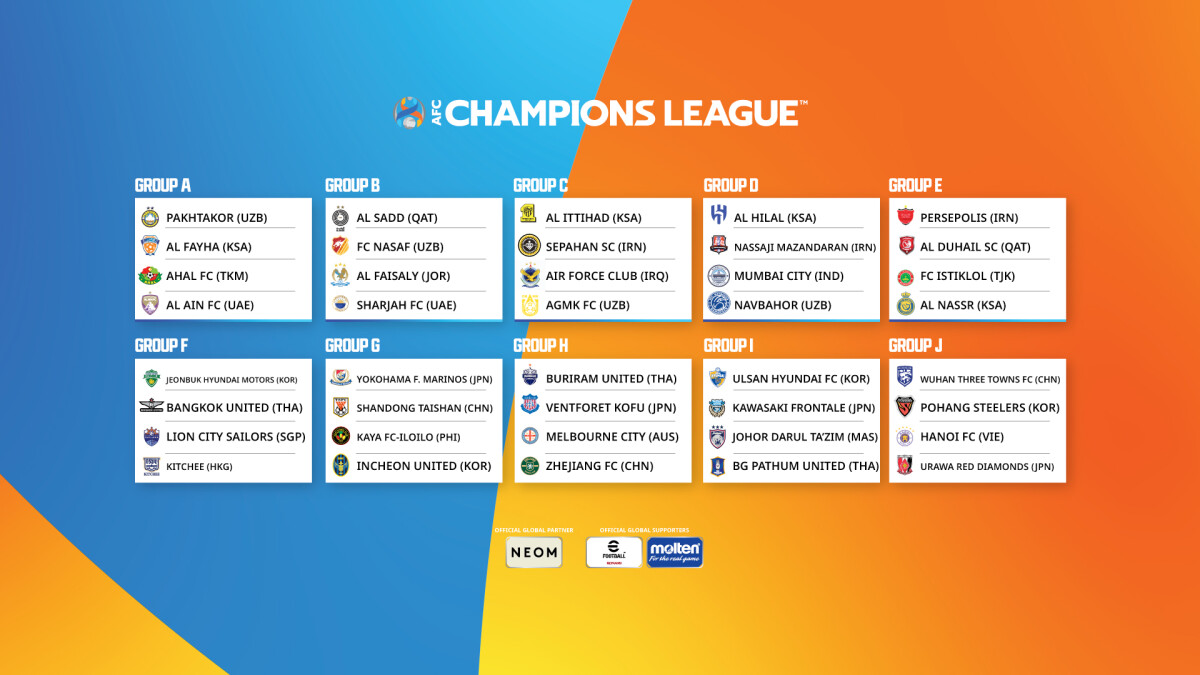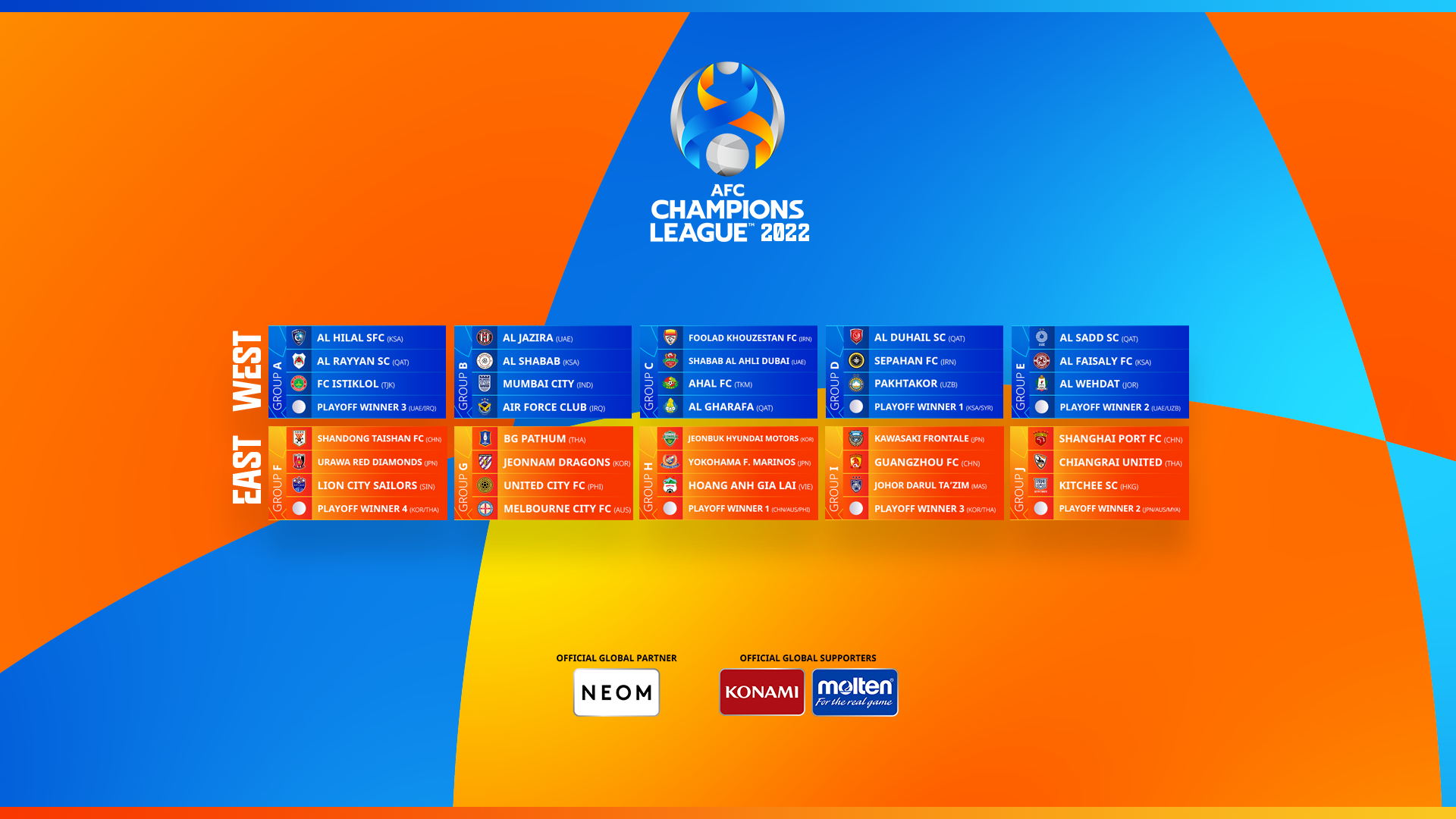AFC Champions League One, Asia’s premier club football tournament, boasts a rich history and captivating drama. From its humble beginnings, the competition has evolved into a showcase of exceptional talent and fierce rivalry, attracting millions of viewers across the continent and beyond. This year’s tournament promises another thrilling season of high-stakes matches, showcasing the best teams and players in Asia.
The qualification process is rigorous, with top clubs from across the AFC’s member associations battling for a place in the group stage. This stage is followed by a knockout phase, culminating in a final that decides the continental champion. The tournament’s financial rewards are significant, further fueling the intensity and prestige of the competition. Past champions, hailing from countries like Japan, South Korea, and Saudi Arabia, have etched their names into the annals of Asian football history.
AFC Champions League: A Continental Showcase: Afc Champions League One
The AFC Champions League (ACL) stands as the pinnacle of club football in Asia, a fiercely contested tournament showcasing the continent’s best teams. Its evolution reflects the growth of the game across diverse nations and cultures, transforming from a relatively small competition into a globally recognized event.
Tournament Overview, Afc champions league one
Established in 1967 as the Asian Club Championship, the tournament underwent several name changes and format revisions before adopting its current title and structure. The ACL’s evolution has mirrored the rising popularity and professionalization of football across Asia.
Qualification is a complex process, varying slightly from year to year depending on the AFC’s ranking system. Generally, teams qualify based on their domestic league performance in the preceding season. Top-performing teams from each participating nation earn entry, with the number of slots allocated depending on their association’s ranking.
The tournament follows a two-stage format: a group stage and a knockout stage. The group stage sees teams divided into groups, playing each other home and away. The top two teams from each group advance to the knockout rounds, a series of single-elimination matches culminating in the final. The final is typically a two-legged affair, with the aggregate score deciding the champion.
The financial rewards for participating teams are substantial, increasing significantly with each stage of the competition. Winning the ACL brings not only prestige but also a considerable cash prize, along with automatic qualification for the FIFA Club World Cup.
| Year | Team | Country | Final Score |
|---|---|---|---|
| 2022 | Al-Hilal | Saudi Arabia | 2-0 (agg.) |
| 2021 | Al-Hilal | Saudi Arabia | 6-2 (agg.) |
| 2020 | Ulsan Hyundai | South Korea | 2-1 |
| 2019 | Al-Hilal | Saudi Arabia | 3-0 (agg.) |
| 2018 | Kashima Antlers | Japan | 2-1 (agg.) |
Notable Teams and Players
Several teams have consistently dominated the ACL, showcasing their prowess and establishing themselves as continental giants. Al-Hilal of Saudi Arabia, for example, holds the record for most titles. Their consistent success stems from shrewd recruitment, strong domestic leagues, and strategic coaching.
Iconic players have left their mark on the tournament, captivating fans with their skill and inspiring future generations. Many of these players have gone on to have successful careers in Europe’s top leagues, highlighting the ACL’s role in developing world-class talent.
Tactical approaches in the ACL have evolved, reflecting global trends in football. Possession-based football has gained prominence, but teams also employ pragmatic strategies tailored to their opponents’ strengths and weaknesses. The balance between attack and defense is a key factor in determining success.
Comparing playing styles, teams from East Asia often emphasize high pressing and quick transitions, while teams from West Asia might favor a more controlled and possession-oriented approach. These differences highlight the diverse tactical landscapes within the Asian footballing world.
| Player | Team | Goals |
|---|---|---|
| Baghdad Bounedjah | Al-Sadd | 40+ |
| Omar Khribin | Al-Hilal | 30+ |
| Hulk | Shanghai SIPG | 30+ |
| Lee Dong-gook | Jeonbuk Hyundai Motors | 25+ |
| Zheng Zhi | Guangzhou Evergrande | 25+ |
Impact and Significance of the Tournament
The economic impact of the ACL is significant, boosting tourism, infrastructure development, and media revenue in participating nations. The tournament’s popularity translates into substantial income for clubs, leagues, and broadcasting companies.
The ACL has played a crucial role in the growth of football across Asia, raising the profile of the sport and inspiring young players. The tournament’s success has led to increased investment in youth academies and infrastructure development.
Beyond the economic benefits, the ACL holds considerable social and cultural significance. It fosters national pride, unites communities, and provides a platform for cultural exchange. The competition transcends national borders, creating a sense of shared identity and passion among Asian football fans.
While precise global viewership figures vary, the ACL enjoys a significant following across Asia and beyond, comparable to other major continental tournaments. Its growing popularity reflects the increasing global interest in Asian football.
- Promotes cross-cultural understanding and exchange.
- Facilitates the development of strong regional partnerships.
- Encourages collaboration in areas such as player development and coaching.
- Strengthens ties between football associations across Asia.
- Provides a platform for showcasing Asian talent on a global stage.
Future Prospects and Challenges
Challenges facing the ACL include maintaining competitive balance among teams from different nations and enhancing the tournament’s global appeal. Ensuring consistent participation from top clubs and addressing scheduling conflicts are also crucial.
Strategies for enhancing the ACL’s appeal include improving marketing and branding, enhancing the fan experience through technology, and creating more engaging content for digital platforms. Strengthening the tournament’s relationship with sponsors and broadcasters is also essential.
Examine how man city vs manchester united fc timeline can boost performance in your area.
Improving competitive balance could involve adjusting the qualification process, introducing financial incentives for smaller nations, and fostering greater cooperation between leagues across Asia. Fair play and consistent officiating are also key.
Technological advancements such as VAR, improved broadcasting technology, and interactive fan engagement tools can greatly enhance the fan experience and attract new viewers.
- Expanding the number of participating teams.
- Introducing a play-off system to enhance competitiveness.
- Creating dedicated youth tournaments to nurture talent.
- Exploring new broadcasting partnerships to reach wider audiences.
- Strengthening collaborations with Asian football associations.
A Memorable Match: 2019 AFC Champions League Final

The 2019 AFC Champions League final between Al-Hilal and Urawa Red Diamonds stands out as a testament to the tournament’s excitement and competitiveness. Al-Hilal’s dominance in the first leg, coupled with Urawa’s valiant fightback in the second, created a dramatic narrative.
Al-Hilal’s clinical finishing and tactical flexibility, particularly their ability to exploit Urawa’s defensive vulnerabilities, were key to their victory. The atmosphere in both legs was electric, showcasing the fervent passion of Asian football fans. The match showcased the high level of skill and strategic depth found within the ACL.
The match epitomizes the intense rivalry and unpredictable nature of the ACL. It highlighted the importance of both individual brilliance and collective team effort in achieving success at the highest level of Asian club football.
The AFC Champions League One is more than just a football tournament; it’s a cultural phenomenon that unites millions across Asia. Its economic impact on participating nations is substantial, boosting tourism and infrastructure development. The tournament’s future hinges on adapting to evolving fan preferences and maintaining a high level of competitive balance. By embracing technological advancements and expanding its reach, the AFC Champions League One can solidify its position as a global sporting powerhouse.

